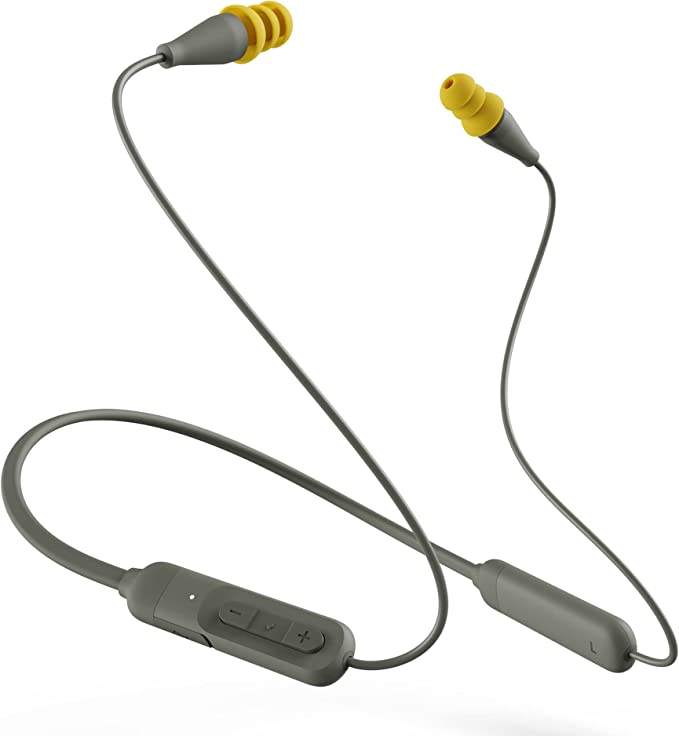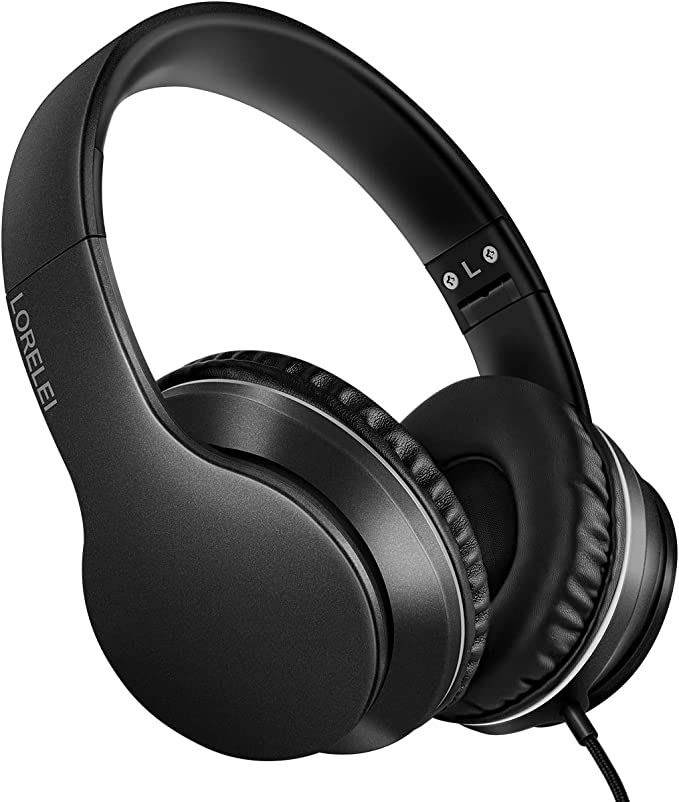We live in a world saturated with sound. From the gentle hum of a refrigerator to the roar of city traffic, the sharp ping of a notification to the intricate layers of our favorite music, our ears are constantly processing an incredibly complex soundscape. Within this auditory flood, we often seek refuge: moments of quiet focus, crystal-clear conversations, or simply the ability to lose ourselves in music without distraction. It’s this fundamental human desire for control over our sonic environment that drives the innovation packed into modern audio devices, such as the Uliptz WH303A Active Noise Cancelling Headphones.
But have you ever stopped to wonder how these devices actually work their magic? How do they silence the drone of an airplane engine, make your voice clearer on a call from a bustling café, or deliver rich, detailed sound seemingly out of thin air? It’s not magic; it’s a fascinating interplay of physics, electronics, and clever engineering. Let’s embark on a journey to unpack the science behind the features listed for the WH303A, using them as a lens to understand the technology that’s reshaping how we listen.
(Please note: All specific features mentioned, such as Active Noise Cancelling, ENC Call Noise Cancelling, 65H Playtime, Deep Bass, and Hi-Fi Stereo Sound, are based on the product description provided for the Uliptz WH303A. This exploration focuses on the general scientific principles behind such features.)

Building Your Personal Sound Barrier: More Than Just Ear Muffs
Before we even get to the fancy electronics, the physical design of headphones plays a crucial role in managing noise. The Uliptz WH303A features an Over-Ear form factor, and this design choice is the first step in building your personal sound barrier.
- The First Layer: The Power of Passive Isolation
Think of over-ear headphones as sophisticated earmuffs. The large earcups are designed to completely enclose your ears, creating a physical seal against your head. This seal acts as a barrier, physically blocking a portion of the external sound waves from reaching your eardrums. It’s simple physics: sound energy struggles to pass through the solid materials of the earcups and the cushion padding. Consider it analogous to closing a window to reduce the noise from a busy street – a straightforward, yet effective, first line of defense. The effectiveness of this passive noise isolation heavily depends on a good fit and a tight seal, preventing sound from leaking in around the edges. This passive blocking is generally more effective against higher-frequency sounds, like chatter or clatter.

* The Active Countermeasure: Demystifying Active Noise Cancellation (ANC)
While passive isolation helps, it often struggles with persistent, low-frequency noises – the very sounds that tend to permeate our modern environments, like the drone of engines, the hum of air conditioning, or the rumble of a train. This is where Active Noise Cancelling (ANC), a key feature listed for the WH303A, steps in with its electronic counter-attack.
To understand ANC, we need to revisit basic physics: sound travels in waves, characterized by properties like frequency (how high or low the sound is) and phase (the position of a point within the wave’s cycle). The core principle behind ANC is a phenomenon called destructive interference. Imagine dropping two pebbles into a calm pond. Where the crest of a wave from one pebble meets the trough (the lowest point) of a wave from the other pebble, they cancel each other out, resulting in calm water.
ANC technology cleverly harnesses this principle. Tiny microphones mounted on the outside of the headphones constantly “listen” to the ambient noise surrounding you. This captured soundwave is instantly fed to a specialized processor inside the headphones. The processor analyzes the incoming noise wave and generates a new sound wave that is its precise opposite – an “anti-noise” wave, perfectly out of phase with the original noise. This anti-noise is then played through the headphone’s internal speakers. When the incoming external noise wave and the internally generated anti-noise wave meet at your eardrum, they effectively cancel each other out, much like the ripples on the pond.
The result? A significant reduction in the perceived ambient noise, particularly those droning, constant low-frequency sounds. It’s important to note that ANC isn’t a magic “mute” button for the world. It’s less effective against sudden, unpredictable noises (like a door slamming) or higher-frequency sounds, which have shorter wavelengths that are harder to precisely counteract in real-time.
However, when the physical barrier of the over-ear design (passive isolation) works in tandem with the electronic cancellation of ANC, the synergistic effect can create a remarkably quiet listening environment, allowing for greater focus or immersion in your audio.
Clarity in Conversation: Making Your Voice Cut Through
You’ve successfully built a quieter bubble for yourself, but what happens when you need to communicate with the outside world? Making a phone call or participating in an online meeting from a noisy environment can be frustrating – not just for you, but especially for the person trying to hear you over the background din. This is where ENC (Environmental Noise Cancellation) for Calls, another technology listed for the Uliptz WH303A, plays its part.
It’s crucial to understand the difference here: ANC primarily benefits your listening experience by reducing the noise you hear. ENC, on the other hand, focuses on cleaning up the sound your microphone picks up, primarily benefiting the person you are talking to.
Imagine your headphone’s microphone as an open ear, capturing not only your voice but also all the surrounding environmental sounds – chatter, traffic, keyboard clicks. The challenge for ENC technology is to intelligently separate your voice from this cacophony. It employs sophisticated algorithms, essentially a digital brain, designed to recognize the characteristic frequencies and patterns of human speech. Think of it like a highly advanced audio sieve: the system analyzes the total sound input from the microphone, identifies what is likely your voice, and then digitally filters out or suppresses the rest – the unwanted environmental noise.
While the specific techniques can vary (sometimes involving multiple microphones to help pinpoint the voice source, a technique known as beamforming – though details aren’t provided for the WH303A), the goal remains the same: to transmit a cleaner, clearer voice signal, making conversations much more intelligible for the listener on the other end, even if you’re calling from a less-than-ideal acoustic environment like a busy street or a shared workspace.

The Journey of Sound: From Source to Your Ears
Now that we’ve addressed managing external noise and ensuring clear outgoing communication, let’s consider the journey of the audio you actually want to hear.
- Wireless Freedom: The Convenience of Bluetooth
The WH303A features Bluetooth connectivity, the ubiquitous standard for short-range wireless communication. At its core, Bluetooth uses radio waves to transmit digital data – in this case, your audio stream – between your source device (phone, laptop, tablet) and your headphones. The obvious advantage is freedom: no cables tethering you to your device, allowing you to move around freely whether you’re commuting, working out, or just relaxing at home. Modern Bluetooth technology has become increasingly efficient, but it’s worth remembering that transmitting audio wirelessly often involves some form of data compression (using algorithms called codecs) to manage bandwidth. While usually imperceptible to most listeners for everyday use, this compression is a technical trade-off for the convenience of being untethered.
- The Reliable Backup: The Wired Connection
Interestingly, the product description also lists Wired connectivity. This inclusion offers valuable flexibility. A wired connection provides a direct pathway for the audio signal, potentially avoiding wireless compression and offering a highly reliable link that isn’t susceptible to interference. It also means you can use the headphones even if their battery runs out (often in a passive mode without ANC/ENC) or connect them to older devices that lack Bluetooth capabilities. It’s a practical backup for ensuring you can always listen.
- The Sound Itself: Striving for Fidelity and Impact
Beyond just getting the signal to the headphones, the quality of the sound reproduction is paramount. The WH303A description mentions Hi-Fi Stereo Sound and Deep Bass. Let’s unpack these terms:
* **Hi-Fi Stereo Sound:** "Hi-Fi" stands for High Fidelity. In audio terms, fidelity means faithfulness – how accurately the headphones reproduce the sound compared to the original recording. Achieving Hi-Fi sound means aiming for minimal distortion and an even response across the entire range of human hearing, delivering the music or audio as the creator intended. "Stereo" refers to the use of two distinct audio channels (left and right). This allows for the creation of a soundstage, giving the listener a sense of space and the directionality of different instruments or sound effects, making the experience more immersive than single-channel (mono) sound.
* **Deep Bass:** Bass refers to the lower end of the audio frequency spectrum – the frequencies that provide the foundational thump, rumble, and richness in music and soundtracks. A claim of "Deep Bass" suggests that the headphone drivers – the small speaker components within the earcups responsible for converting electrical signals into sound waves – are specifically designed or tuned to effectively reproduce these low frequencies with presence and impact. The physical design of the driver (size, materials, excursion capability) and the acoustic enclosure of the earcup all play a role in achieving powerful bass response, a key element for enjoyment in many music genres and movie experiences.
Together, these claimed attributes point towards an intention to deliver an audio experience that is not only clear and spacious (Hi-Fi Stereo) but also has a satisfying low-end foundation (Deep Bass).
The Power Within: Engineering for Endurance
All this sophisticated technology – noise cancellation, wireless transmission, powerful audio reproduction – requires energy. One of the standout claims for the Uliptz WH303A is its 65H Playtime. How is such long endurance possible? It’s a testament to progress in two key areas: battery technology and energy efficiency.
- The Science of Stamina:
Most modern wireless headphones rely on rechargeable Lithium-ion (Li-ion) batteries. Over decades of development, Li-ion technology has achieved remarkable energy density – the ability to store a large amount of energy in a small, lightweight package. This allows headphones to house a substantial power reserve without becoming overly bulky or heavy.
Equally important is energy efficiency. The complex chips responsible for handling Bluetooth communication, processing audio signals, and running noise-cancellation algorithms have become incredibly adept at performing their tasks while consuming minimal power. Engineers continuously optimize these components and the overall system design to sip, rather than gulp, energy from the battery.
When you combine a high-capacity battery with highly efficient electronics, you get the potential for impressive playtime figures like the stated 65 hours. For the user, this translates directly into practical convenience: potentially days or even weeks of typical use between charges, the ability to handle long journeys without battery anxiety, and simply less time tethered to a charging cable.

Conclusion: The Symphony of Science in Your Ears
Our exploration of the features listed for the Uliptz WH303A headphones reveals a microcosm of modern applied science. We’ve touched upon the wave physics of acoustics in understanding passive isolation and the clever manipulation of sound waves in Active Noise Cancellation. We’ve seen the power of signal processing and algorithms at work in Environmental Noise Cancellation for clearer calls. We’ve acknowledged the radio frequency magic of Bluetooth enabling wireless freedom, alongside the reliable fallback of wired connections. We’ve considered the goals of audio engineering in striving for High Fidelity sound and impactful Bass. And finally, we’ve appreciated the blend of electrochemistry and efficient electronic design that delivers remarkable battery endurance.
These diverse scientific principles don’t operate in isolation. They converge and synergize within devices like these headphones, orchestrated to achieve specific goals: to grant us greater control over our auditory environment, to facilitate clearer communication, to deliver immersive and enjoyable sound, and to offer the convenience of wireless, long-lasting operation.
So, the next time you slip on a pair of modern headphones to find focus, connect with a loved one, or lose yourself in a favorite album, take a moment to appreciate the invisible symphony of science playing out right beside your ears. Understanding the “how” and “why” behind the technology doesn’t just demystify the buzzwords; it deepens our appreciation for the ingenuity that continuously shapes and enhances our daily sensory experiences, empowering us to listen better in our complex, noisy world.




